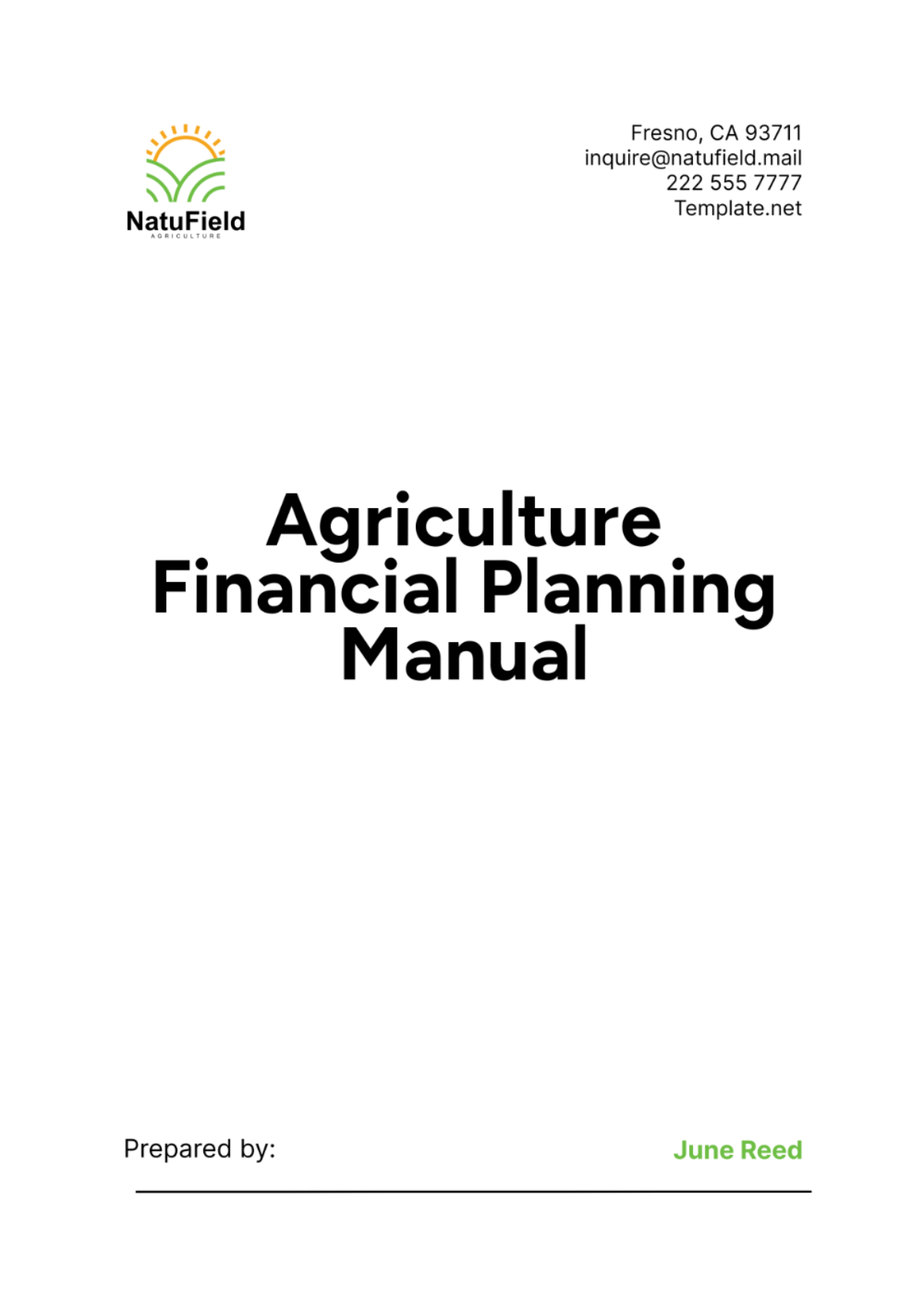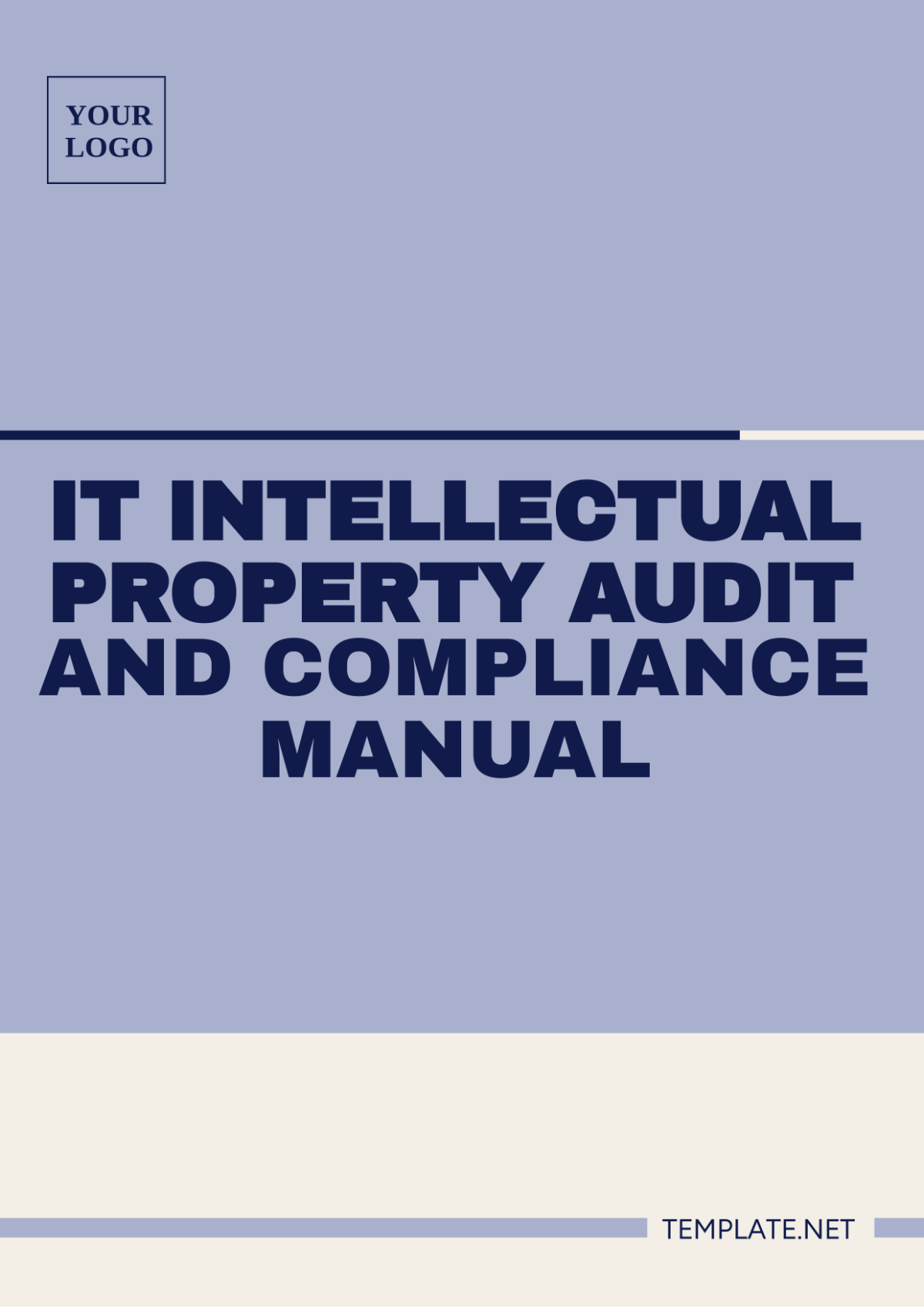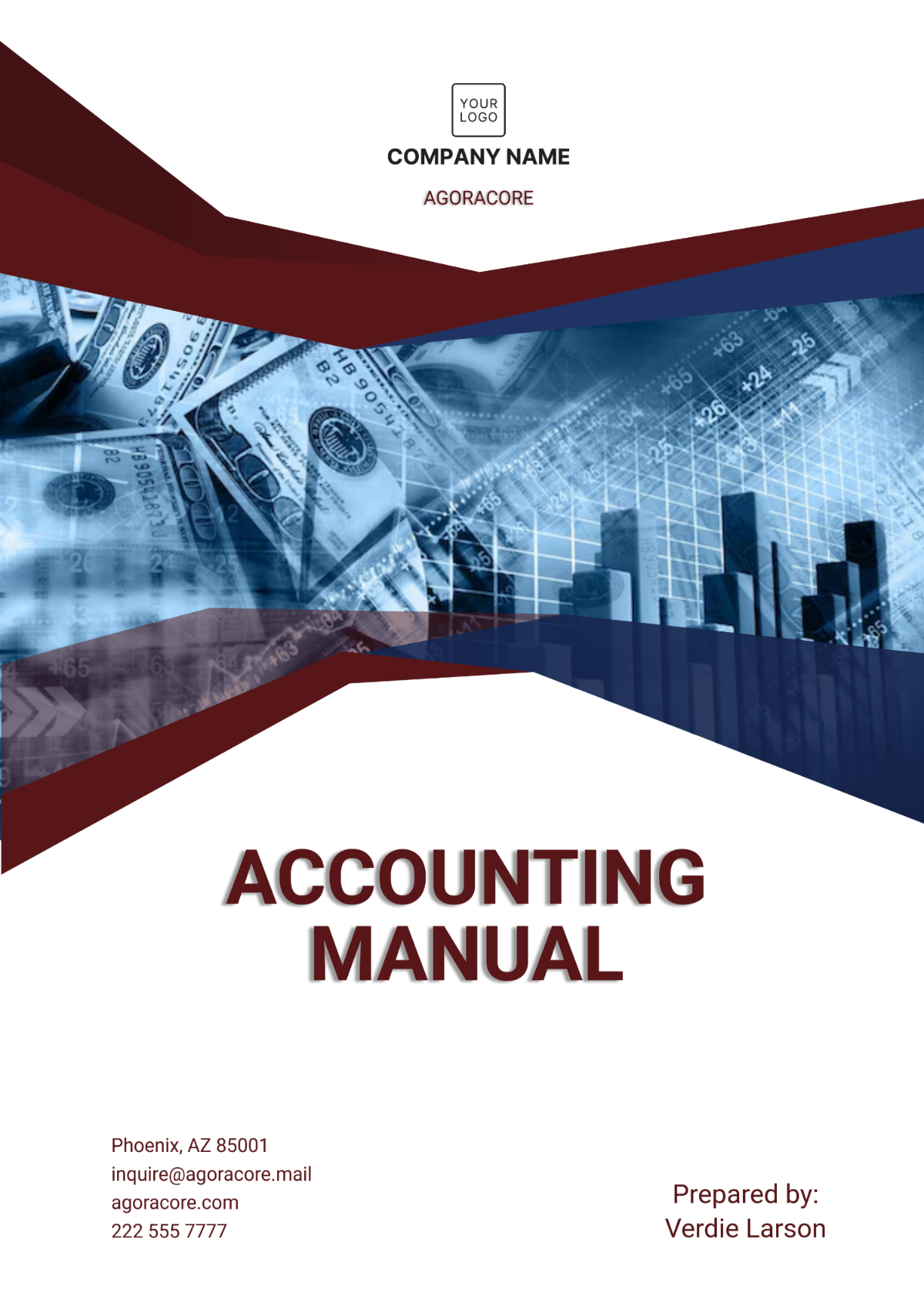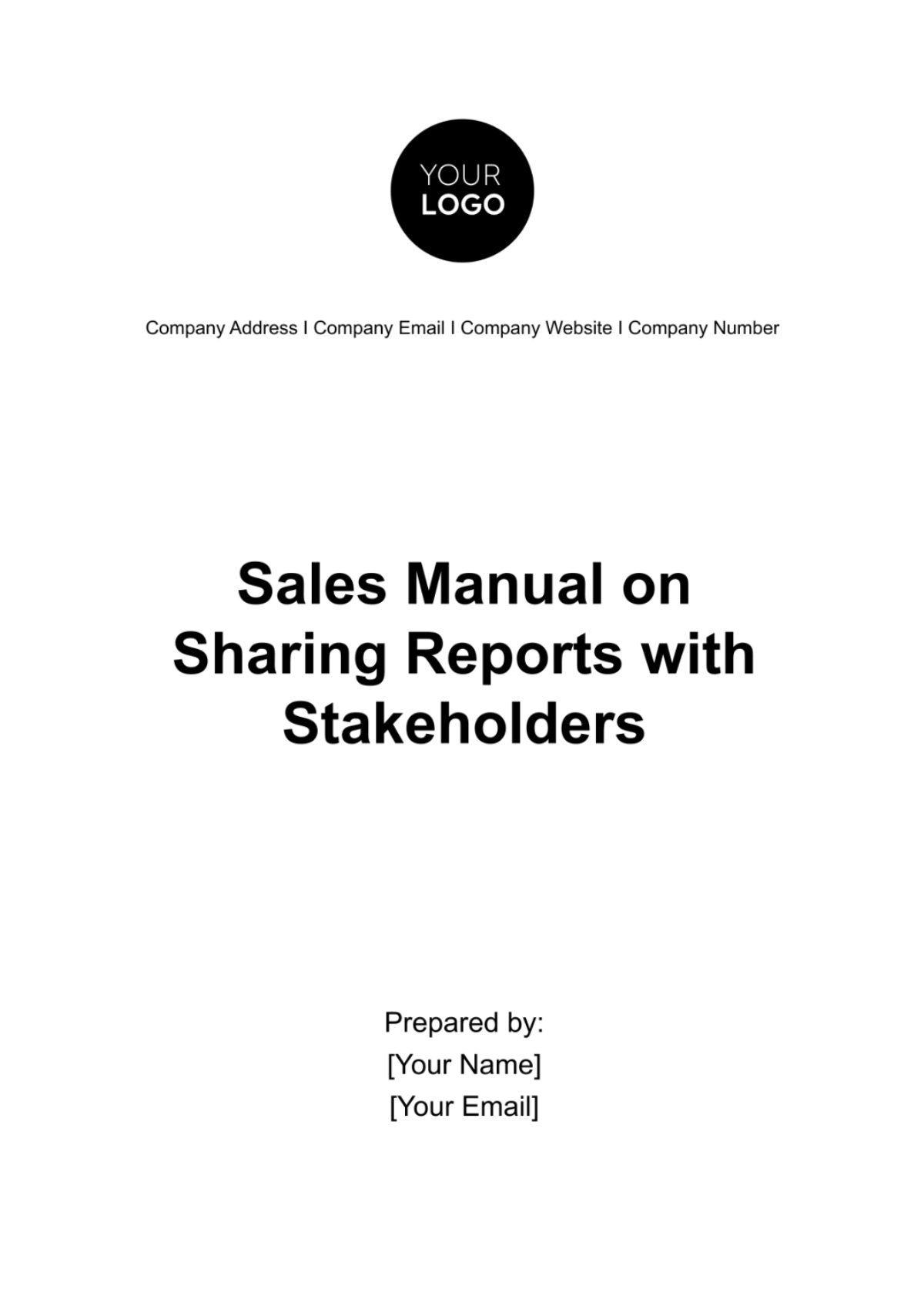Accounting Ethics and Best Practices Manual
I. Introduction
A. Purpose
This manual is designed to achieve multiple objectives:
Ethical Framework Establishment
Core to our objectives is establishing a robust ethical framework, serving as the foundation for a workplace culture guided by unwavering ethical principles.
Promotion of Best Practices
Complementary to our ethical goals, the objective is to disseminate and encourage the adoption of industry-leading methodologies, aiming to enhance our operational capabilities and ensure sustained success and growth.
Continuous Improvement
Focusing on fostering a culture of continuous improvement, the manual provides guidance on adapting to emerging industry trends and evolving best practices to stay at the forefront of financial management.
Employee Empowerment
Empowering our employees with the knowledge and tools to make informed ethical decisions and implement best practices is a key objective, ensuring that every team member contributes to our shared commitment to excellence.
B. Scope of the Manual
Professional Context
Provides insights into how ethical considerations and best practices are seamlessly integrated into our company's unique structure, addressing the varied roles and responsibilities of our accounting professionals.
Organizational Alignment
Expands on the professional context, illustrating the manual's alignment with our company's values, mission, and operational context, tailoring ethical considerations and best practices to resonate with the specific nuances of our organization.
Industry Relevance
Extends to the broader industry landscape, ensuring that our ethical standards and practices align with and, when possible, surpass industry benchmarks, positioning our company as a leader in financial integrity and excellence.
C. Target Audience
Accounting Professionals
Tailored for our accounting professionals, this manual serves as a practical guide for navigating ethical challenges and integrating industry-leading practices into their daily activities.
Organizational Leadership
Addresses organizational leaders, highlighting how the manual is a tool for shaping a culture of integrity and compliance within our accounting and financial teams, emphasizing the role of leadership in championing ethical behavior.
II. Code of Ethics
A. Guiding Principles
Integrity
Upholding honesty and fairness in all financial dealings, our professionals commit to transparent and truthful representation of financial information. This commitment includes providing accurate and unambiguous financial reports and avoiding conflicts of interest that may compromise integrity.
Transparency
Advocating for openness and clarity in financial reporting, ensuring stakeholders have a comprehensive understanding of our financial activities. This involves disclosing all relevant financial information and providing clear explanations of financial decisions.
Accountability
Acknowledging responsibility for our actions, our professionals commit to delivering accurate and reliable financial information. This involves taking ownership of errors and correcting them promptly and ensuring financial reports align with ethical standards.
B. Ethical Decision-Making
Navigating ethical dilemmas requires a structured approach:
Scenario Analysis
Professionals are guided through hypothetical scenarios, encouraging critical examination of potential ethical challenges. This structured approach involves evaluating the ethical implications of various scenarios and discussing the appropriate course of action.
Case Studies
Real-world case studies offer practical insights, allowing professionals to apply ethical principles to complex situations. Examples of past ethical dilemmas and discussions on how to apply ethical principles in similar situations enhance professionals' ability to make informed decisions.
Moral Reasoning
Emphasizing critical thinking, this section guides professionals in developing a sound moral reasoning process when faced with ethical decisions. This process involves identifying ethical considerations in decision-making and applying moral principles to resolve ethical challenges.
C. Conflicts of Interest Management
Identification
Clear guidelines for recognizing situations that may lead to conflicts of interest, ensuring early detection. This involves regularly assessing personal and professional relationships and proactively disclosing potential conflicts.
Disclosure Procedures
Established processes for transparently disclosing potential conflicts of interest, fostering openness and accountability. This involves reporting conflicts promptly to relevant parties and providing detailed information about potential conflicts.
Conflict Resolution
Defined mechanisms for addressing and resolving conflicts, promoting fair and ethical decision-making. This involves implementing fair and transparent procedures and prioritizing ethical considerations in conflict resolution.
D. Confidentiality and Data Security
Legal Obligations
Outlining legal requirements surrounding data protection and confidentiality, ensuring compliance with regulations. This involves adhering to data protection laws and safeguarding sensitive financial information.
Guidelines for Handling Data
Practical guidelines for securely handling and storing sensitive financial information to prevent unauthorized access. These guidelines include encryption and secure storage practices, as well as access controls and permission settings.
E. Reporting Irregularities
Establishing Reporting Channels
Clear and accessible channels for reporting irregularities, fostering a culture of accountability. This involves providing multiple avenues for reporting concerns and ensuring confidentiality in the reporting process.
Whistleblower Protections
Ensuring protection for whistleblowers, encouraging individuals to come forward without fear of retaliation. This involves clearly defined protections against retaliation and confidentiality provisions for whistleblowers.
F. Professional Development
Ongoing Education Programs
Investment in continuous professional development, including workshops and training programs on evolving ethical standards. This commitment includes regular training sessions on ethical considerations and updates on changes in ethical standards and regulations.
Skills Enhancement
Opportunities for professionals to enhance their ethical decision-making skills, ensuring competence in ethical practices. Initiatives in this area include workshops on ethical decision-making processes and skill-building exercises focused on ethical considerations.
G. Enforcement and Disciplinary Measures
Clearly Defined Consequences
Articulating consequences for violations, emphasizing the seriousness of upholding ethical standards. This includes specific penalties for ethical breaches and consistent enforcement of consequences.
Consistent Enforcement
Ensuring the consistent application of disciplinary measures, reinforcing the commitment to maintaining a culture of integrity. This involves fair and impartial application of disciplinary measures and regular reviews to ensure uniformity in enforcement.
H. Continuous Review and Enhancement
Regular Ethical Audits
Scheduled reviews of adherence to the Code of Ethics, identifying areas for improvement and reinforcement. This involves assessing adherence to ethical standards through periodic reviews and implementing corrective measures based on audit findings.
Adapting to Industry Changes
Flexibility to adjust the Code in response to evolving industry standards, ensuring continued relevance and effectiveness. This commitment involves monitoring industry developments and regulatory updates and revising the Code to align with emerging best practices.
III. Professional Conduct
A. Upholding Ethical Standards
Integrity in Client Relationships
Professionals are expected to maintain the highest level of integrity in their interactions with clients. This includes providing accurate and honest financial advice, disclosing potential conflicts of interest, and ensuring the confidentiality of client information.
Confidentiality and Non-Disclosure
Upholding strict confidentiality standards, professionals must safeguard sensitive financial information and refrain from disclosing confidential details without proper authorization. This commitment extends to both client data and internal financial matters.
Professional Courtesy and Respect
Interactions within the professional realm should be characterized by courtesy and respect. Professionals must foster a positive and inclusive working environment, treating colleagues, clients, and stakeholders with professionalism and courtesy.
B. Communication and Transparency
The table below outlines key information regarding responsible parties, frequency, and preferred channels for key practices in Communication and Transparency:
Responsible Party | Frequency | Preferred Channel of Communication |
|---|---|---|
Financial Reporting Team | Regular updates during reporting periods | Formal reports, video conferences, and secure online platforms |
Professionals are expected to communicate financial information clearly and in a timely manner. This involves providing comprehensive explanations of financial reports, responding promptly to client inquiries, and ensuring that stakeholders have access to relevant financial information. Additionally, transparency is crucial in financial reporting. Professionals must ensure that financial statements accurately reflect the financial health of the entity. Any potential uncertainties or significant events impacting financial positions should be transparently disclosed. It is imperative to avoid the dissemination of misleading financial information. Professionals must exercise diligence in presenting financial data, avoiding any actions that could create a false impression or mislead stakeholders.
IV. Compliance with Accounting Standards
A. Adherence to Generally Accepted Accounting Principles (GAAP)
Understanding and Application
Professionals are required to have a thorough understanding of GAAP and apply these principles consistently in financial reporting. This involves staying updated on any changes to GAAP and ensuring that financial statements align with these standards.
Consistency in Application
Consistency is key in adhering to GAAP. Professionals must apply accounting principles consistently across different reporting periods, ensuring that financial statements provide a reliable basis for comparison.
B. International Financial Reporting Standards (IFRS) Compliance
Awareness and Implementation
For entities following IFRS, professionals must be aware of the standards and ensure compliance in financial reporting. This includes understanding the specific requirements of IFRS and implementing them accurately.
Cross-Border Transactions
In the context of global business, professionals must navigate the complexities of cross-border transactions while ensuring adherence to IFRS. This involves addressing currency issues, consolidation requirements, and other factors that may impact financial reporting.
C. Regulatory Compliance
Understanding and Adhering to Regulations
Professionals must be well-versed in relevant financial regulations and ensure strict adherence. This includes compliance with regulatory bodies such as the Securities and Exchange Commission (SEC) and other industry-specific regulatory authorities.
Documentation and Record-Keeping
Robust documentation and record-keeping are essential for regulatory compliance. Professionals must maintain accurate records that provide a clear trail of financial transactions, supporting the entity's adherence to applicable regulations.
D. Internal Controls and Audit Compliance
Establishment of Internal Controls
Professionals play a key role in establishing and maintaining effective internal controls. This involves implementing processes that safeguard assets, prevent fraud, and ensure the accuracy of financial records.
Facilitating External Audits
Cooperation with external auditors is vital for audit compliance. Professionals must provide auditors with access to relevant financial information, respond to inquiries promptly, and address any findings or recommendations resulting from the audit process.
E. Continuous Training on Evolving Standards
Professional Development Initiatives
Given the dynamic nature of accounting standards, professionals must engage in continuous training and development initiatives. This involves staying informed about updates to accounting standards, attending relevant training sessions, and adapting to changes in the regulatory landscape.
Implementation of New Standards
When new accounting standards are introduced, professionals should proactively implement necessary changes. This includes updating accounting policies, modifying financial reporting processes, and ensuring a smooth transition to the new standards.
V. Conflicts of Interest Management
A. Identification and Assessment
Proactive Identification
Professionals are tasked with proactively identifying situations that may give rise to conflicts of interest. This involves a thorough examination of personal and professional relationships, business affiliations, and other circumstances that could compromise objectivity.
Comprehensive Assessment
Once identified, conflicts of interest must undergo a comprehensive assessment. Professionals must evaluate the potential impact on decision-making, ensuring that any conflicts are disclosed and addressed appropriately.
B. Transparent Disclosure Procedures
Timely Reporting
Professionals must promptly disclose any potential conflicts to relevant parties, allowing for transparent decision-making and mitigation strategies.
Disclosure Documentation
The process of disclosure should be well-documented. Professionals must maintain clear records of disclosures, detailing the nature of the conflict, the parties involved, and the steps taken to address and mitigate the conflict.
C. Mitigation and Resolution
Mitigation Strategies
Implementation of mitigation strategies is essential in managing conflicts of interest. Professionals must develop and execute strategies to minimize the impact of conflicts, ensuring that decisions are made in the best interest of the entity and stakeholders.
Resolution Protocols
In cases where conflicts persist, clear resolution protocols should be in place. Professionals must follow established procedures to address conflicts, seeking resolution through ethical means and upholding the integrity of decision-making processes.
VI. Confidentiality and Information Security
A. Legal Compliance
Understanding Data Protection Laws
Professionals must have a comprehensive understanding of data protection laws applicable to the jurisdiction in which they operate. This involves compliance with regulations such as the General Data Protection Regulation (GDPR) or the Health Insurance Portability and Accountability Act (HIPAA).
Adherence to Privacy Regulations
Strict adherence to privacy regulations is non-negotiable. Professionals must ensure that the collection, storage, and processing of personal and financial data align with legal requirements, safeguarding the privacy rights of individuals.
B. Secure Handling of Financial Information
Encryption and Access Controls
To prevent unauthorized access, financial information must be securely handled. Professionals must employ encryption technologies and implement access controls to ensure that sensitive financial data is only accessible to authorized individuals.
Guidelines for Data Handling
Practical guidelines for the handling of financial information should be established. These guidelines include protocols for data transmission, storage, and disposal, minimizing the risk of data breaches and unauthorized disclosures.
C. Whistleblower Protections
Establishing Reporting Channels
A culture of accountability is fostered through clear and accessible reporting channels which includes emails and website for anonymous reporting. Professionals must establish mechanisms for individuals to report confidentiality breaches or information security concerns without fear of retaliation.
Confidentiality Provisions for Whistleblowers
Whistleblowers must be afforded confidentiality protections. Professionals must ensure that individuals reporting breaches of confidentiality or information security are shielded from retaliation, fostering an environment that encourages ethical reporting.
D. Continuous Training on Information Security
Awareness Programs
Continuous training programs are essential for promoting awareness of information security protocols. Professionals should engage in regular training sessions covering best practices, emerging threats, and the latest technologies in information security.
Adapting to Evolving Threats
Given the dynamic nature of cyber threats, professionals must stay vigilant and adapt to evolving risks. This involves regularly updating information security protocols to address emerging threats and vulnerabilities.
VII. Independence in Auditing
A. Maintaining Objectivity
Impartial Decision-Making
Independence requires auditors to maintain impartiality in their decision-making processes. Professionals must avoid conflicts of interest that could compromise their ability to provide unbiased assessments of financial statements.
Avoidance of Financial Relationships
Auditors should abstain from financial relationships with the entities they are auditing. This involves refraining from investments, loans, or other financial transactions that could create a perception of bias or compromise professional judgment.
B. Independence in Fact and Appearance
Perception Matters
Recognizing the importance of both actual independence and the perception of independence, auditors must consider how their actions might be perceived by stakeholders. Transparency and clear communication are crucial to mitigating any potential concerns.
Avoidance of Non-Audit Services
To maintain independence, auditors should refrain from providing non-audit services that could impair objectivity. This includes consulting, advisory, or other services that might compromise the independence of the auditing function.
C. Rotation of Audit Partners
Regular Rotation
Auditors must adhere to a schedule of regular rotation to minimize the risk of familiarity that could compromise independence. This involves rotating lead audit partners periodically to bring in fresh perspectives and mitigate the potential for undue influence.
Transition Protocols
Professionals must ensure a seamless transfer of responsibilities, maintaining continuity in the auditing process while upholding the principles of independence.
D. Evaluating and Addressing Threats
Threat Assessment
Auditors are tasked with regularly assessing potential threats to independence. This involves identifying factors that could compromise independence and evaluating their significance in the context of the audit engagement.
Mitigation Strategies
When threats are identified, auditors must implement effective mitigation strategies. This may include additional safeguards, disclosure of potential threats, or other measures to address concerns and maintain independence.
E. Compliance with Regulatory Requirements
Adherence to Professional Standards
Auditors must strictly adhere to professional standards and regulatory requirements governing independence. This includes compliance with guidelines set forth by regulatory bodies such as the Public Company Accounting Oversight Board (PCAOB) or other relevant authorities.
Continuous Monitoring
Continuous monitoring is essential to ensure ongoing compliance with independence requirements. Auditors should stay informed about updates to regulations and standards, adjusting practices as needed to align with evolving expectations.
F. Reporting Independence Concerns
Establishing Reporting Channels
Robust reporting channels should be established to allow auditors to raise independence concerns. Professionals must feel empowered to report any factors that may compromise their independence without fear of retaliation.
Confidential Reporting Protocols
Confidentiality is crucial in reporting independence concerns. Auditors should have confidence that their reports will be handled with discretion, protecting both the whistleblower and the integrity of the auditing process.
VIII. Best Practices in Financial Reporting
A. Clarity and Transparency
Clear and Concise Presentation
Best practices dictate a clear and concise presentation of financial information. Reports should be structured in a manner that is easily understandable, allowing stakeholders to grasp key financial insights without unnecessary complexity.
Transparent Disclosures
Transparency is paramount in financial reporting. Best practices include comprehensive disclosures of relevant information, ensuring that stakeholders have a complete understanding of the entity's financial position and performance.
B. Accuracy and Reliability
Precision in Data Representation
Financial reports must reflect precise data representation. Best practices involve rigorous verification processes to ensure accuracy, reducing the risk of errors that could impact the reliability of financial information.
Consistency Across Periods
Maintaining consistency in reporting practices across different periods enhances the reliability of financial statements. Best practices include standardized accounting policies and methodologies to facilitate meaningful comparisons.
C. Timeliness in Reporting
Adherence to Reporting Deadlines
Best practices dictate strict adherence to reporting deadlines. Timely reporting ensures that stakeholders have access to up-to-date financial information, supporting informed decision-making and fostering trust.
Efficient Closing Processes
Streamlining closing processes is essential for timely reporting. Best practices involve efficient financial close procedures, minimizing delays and allowing for prompt preparation and dissemination of financial reports.
D. Comprehensive Risk Disclosures
Identification of Risks
Best practices in financial reporting include the identification and disclosure of potential risks that may impact the entity. This involves a thorough assessment of internal and external factors that could affect financial performance.
Clear Articulation of Risk Mitigation Strategies
In addition to risk disclosure, best practices dictate a clear articulation of strategies in place to mitigate identified risks. This provides stakeholders with insights into the entity's risk management approach.
E. Stakeholder Engagement
Interactive Reporting Formats
To enhance stakeholder engagement, best practices may involve interactive reporting formats. This could include digital platforms or presentations that allow stakeholders to explore financial data in a more dynamic and user-friendly manner.
Regular Communication
Best practices emphasize regular communication with stakeholders beyond formal reporting periods. This includes updates, briefings, or forums where financial leaders can address queries and provide additional context to financial information.
F. Compliance with Regulatory Changes
Proactive Approach to Regulatory Updates
Best practices involve a proactive approach to regulatory changes. Financial reporting should align with the latest regulatory requirements, ensuring compliance and avoiding potential penalties or reputational risks.
Continuous Monitoring and Training
To stay abreast of regulatory changes, best practices include continuous monitoring and training programs. This ensures that finance teams are equipped to implement necessary adjustments in response to evolving standards.
G. Technology Integration
Efficient Financial Reporting Systems
Best practices leverage technology for efficient financial reporting systems. This includes the integration of advanced software and tools that enhance the accuracy, speed, and accessibility of financial information.
Data Security Measures
In the era of digitalization, best practices emphasize robust data security measures. Financial reporting systems should incorporate encryption, access controls, and regular security audits to safeguard sensitive financial data.

















































